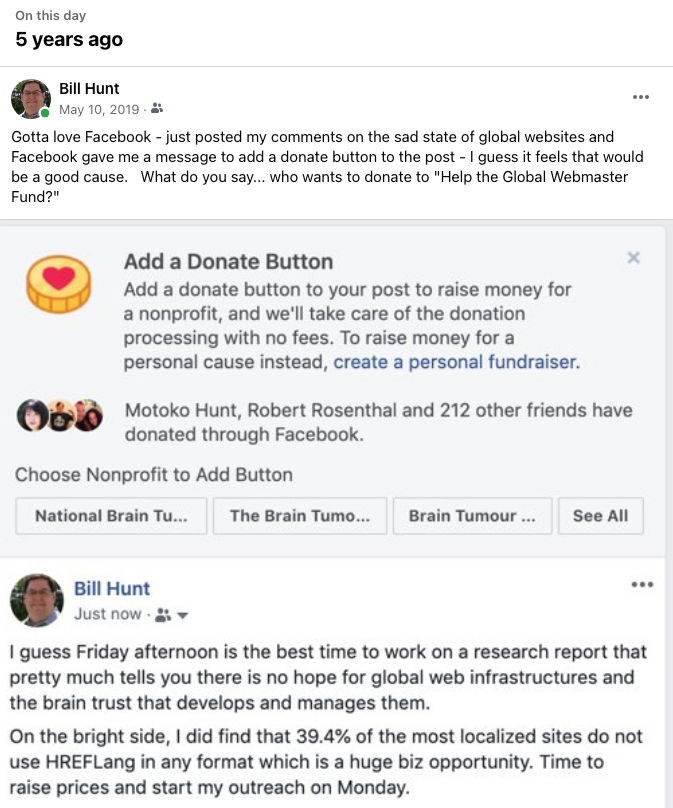No more than 30 minutes after I posted an article detailing SEOs’ frustrations implementing hreflang, Facebook reminded me that I had posted a similar frustration on a Friday five years earlier. Funny, Facebook wanted to create a donate button when I posted the observation. I should have taken them up and maybe made a GoFundMe for the overworked DevOps team that cannot even consider fixing their infrastructure.

The big difference between then and now is that five years ago, I saw this dysfunction and the lack of hreflang implementation for global sites as an opportunity. We were very successful, especially with our full-service programs managing everything, including regular XML sitemaps. As more web teams looked at cutting costs, they went with offshoring this work or stopping it altogether.
Today, I find it much harder to be enthusiastic and willing to chase windmills. We face even more challenges, including many SEOs begging Google to eliminate hreflang support.
As I recount in the frustrations article, most of our challenges are still present, elevated by the SEO community’s apathy and hate for the difficulties of hreflang. I am not quite ready to burn bridges and highlight specific dysfunction cases, but I will try to outline some of them as broadly as possible.
Why do we have chaos?
There are many reasons for the dysfunction I describe in the SEO frustrations article. I have been trying to document it, explain why, and suggest ways to solve it. I created an entire chapter in the Implementing Hreflang course to help people anticipate the challenges and offer ways to overcome them.
Decentralization
That is almost too broad of a word and a potential oversimplification of a complex problem. The level of decentralization, where the market and brand companies can do as they please, and a lack of centralization within teams further complicate challenges.